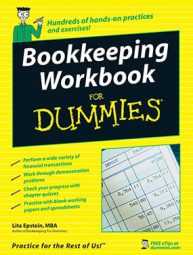Every business owner faces the possibility of theft or fraud. Too often, business owners find out about an employee pocketing some assets when it’s too late to do anything about it. Even the most loyal employee can be driven to steal if their personal financial pressures become too great.
There are four basic types of financial fraud a business owner may face:
Embezzlement: This involves the theft of funds by a person who actually has control of the funds, such as a bookkeeper or comptroller.
Internal theft: This involves the theft of company assets by employees, such as office supplies or merchandise on store shelves.
Payoffs and kickbacks: This involves the acceptance of payments by vendors for sending business their way.
Skimming: This involves pocketing some of the company’s sales receipts and not recording the revenue on the books.
Your best defense against theft and fraud is to put up barriers to discourage it. You do this by dividing staff responsibilities to reduce the possibility and opportunity for theft and fraud.
Here are some key tips for controlling your cash and minimizing theft and fraud:
Separate cash handlers: Be sure that the person who accepts the cash is not the same person who records the transaction in the books.
Separate authorization responsibilities: Be sure that the person who authorizes a check is not the same as the person who prepares the check. If possible, a third person should be the one to sign the checks. That way three people would have to collude to steal money using a company check.
Separate bookkeeping functions: Don’t put too much authority or trust in one person (unless that person is the business owner).
Separate operational responsibility: Be sure you have one person who accepts the cash transactions and a second person who enters those transactions in the books. For example, the person who handles the cash register should not be the one who makes the bank deposit.
Separate financial reporting: Be sure that the person who prepares your financial reports is not the same person who is responsible for entering the data day to day in your books. Often, an outside accountant is responsible for using the data entered to prepare the financial reports if a business does not have an accountant on staff.

